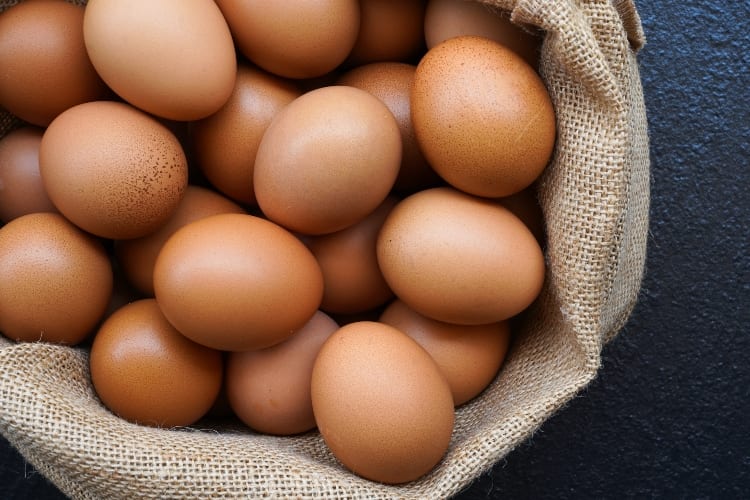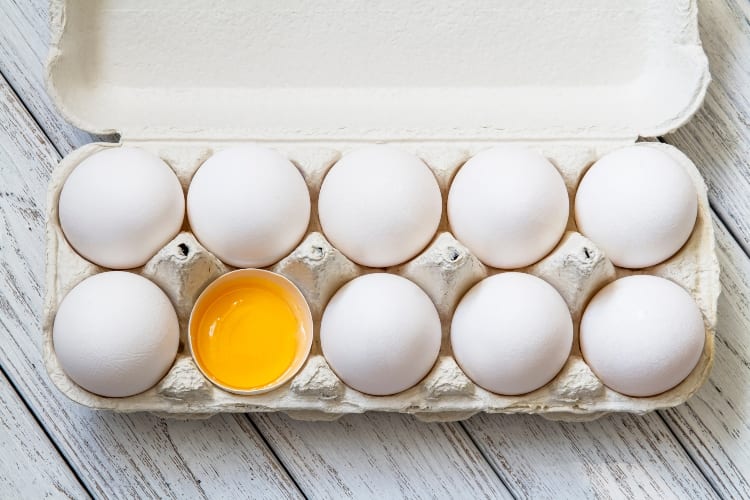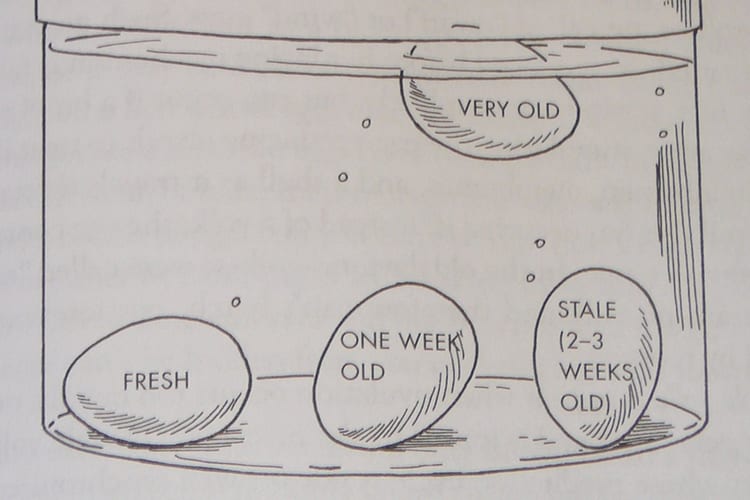
NP27/Shutterstock
Eggs are one of those things that nearly everyone has in their fridge. However, more often than not, it can be a little challenging to read the best by date on the carton. Thankfully, there's a very easy, quick test you can do to tell if they are still good!
What Eggs Consist Of

marketlan/Shutterstock
If you love making eggs in the morning, you know there's one major problem with them: there's not an easy way to tell if they're still good. You can't smell them and cracking them will ruin the egg. Plus, even if you can read the best by date, you cannot always trust it. And sometimes, the use by date doesn't factor in. Left your eggs out a little too long and want to know if they're still good? Well, now there's an easy and quick way, called the "float test."
To understand how the egg float test works, you'll first need to know how an egg works. First, there's an air bubble under an eggshell. The bubble works as a safety cushion for whites and yolks whenever the egg moves. Hardboiled egg lovers actually see the remnants of this bubble all the time: it's the small imprint on the top of an egg when peeled. Next, you need to know that egg shells are “semi-permeable membranes,” meaning air leaves the eggs very slowly. With these two simple concepts in mind, you can learn the egg float test and how it works!
Float Test: Are They Still Good?

Now You Know/Reddit
Now that we have all that simple science out of the way, we can move on to the egg float test. Grab the eggs you are wondering about and a decent-sized bowl of fresh water. The water should feel cool to the touch, but not cold, a little under room temperature. Now, slowly and carefully dip the eggs into the bowl, one in at a time. A totally fresh egg will sink to the bottom. A slightly older product, but one that's still okay to eat, will stand on its end in the water. If the eggs float, do not eat them and put them right in the trash!
Why does the float test work? Well, it's all tied to the air bubble we talked about it. Over time, the bubble grows larger and larger as air escapes through the semi-permeable membrane. Once enough air enters the bubble to cause flotation, you know the eggs are no longer good to eat. It's that simple! As you can see, the float test is also a very fun experiment you can do with kids. Have them do all the work, while you just sit back and explain the science! Plus, it also teaches the kids about food safety. It will certainly keep them safer in the future during breakfast time!
Now, you can enjoy breakfast without ever needing to worrying about if the eggs are okay, no matter what the carton does or doesn't say!
Sources: Nellie’s Free Range, The Takeout.



